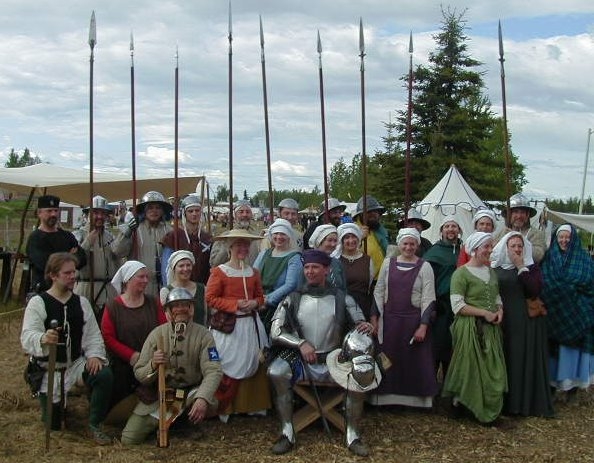
Historic
Recrudescence
Guild

Bartitsu Program
Matt Cacy, who does fighting demonstrations at HRG events, has offered a class in the Victorian/Edwardian self defense art of Bartitsu. This class is not currently available, but it may be offered again in the future.
Contact: Matthew Cacy, sabre____@hotmail.com or at mhcacyedu@yahoo.com
Equipment- Comfortable clothes, tennis shoes or wrestling shoes, athletic supporter/cup.
We have sticks to loan for class but it is alright if you bring your own cane. If you progress in the class it is mandatory to acquire a three-weapon fencing mask for use in more vigorous drills.
What is bartitsu?
Bartitsu is a martial art and self defense system created by Edward William Barton-Wright in 1898. It combines the disciplines of Jiu-jitsu, Savate, Boxing, Canne de Combat, Judo, and Schwingen. Sherlock Holmes attributed his victory over Professor Moriarty in The Adventure of the Empty House to his knowledge of "bartitsu", a reference that allowed the art to remain in the public mind since the closure of the bartitsu club in 1902. There has been an active revival of Bartitsu since 2002.
Barton-Wright encouraged members of the Bartitsu Club to study each of the four major hand-to-hand combat styles taught at the Club, each of which broadly corresponded to a different "range" of personal combat.
The goal was to master each style well enough that they could be used against the others if needed. This process was similar to the modern concept of cross-training and it can be argued that Bartitsu itself was more in the nature of a cross-training system than a formal martial arts style.
In 1899, Barton-Wright summarized the essential principles of Bartitsu as:
1. To disturb the equilibrium of your assailant.
2. To surprise him before he has time to regain his balance and use his strength.
3. If necessary, to subject the joints of any parts of his body, whether neck, shoulder, elbow, wrist, back, knee, ankle, etc. to strains that they are anatomically and mechanically unable to resist
If you wish to learn more about Bartitsu and its history please visit
www.bartitsu.org, for articles and videos from the International bartitsu Society webpage and the bartitsu Wikipedia page.
Special Thanks to Mr. Tony Wolf for allowing the use of media from the International Bartitsu Society website and the Bartitsu wikipedia page.
Home | Events | Research and Experiments | HRG in the Schools | Links | Email us:hrg@gci.net